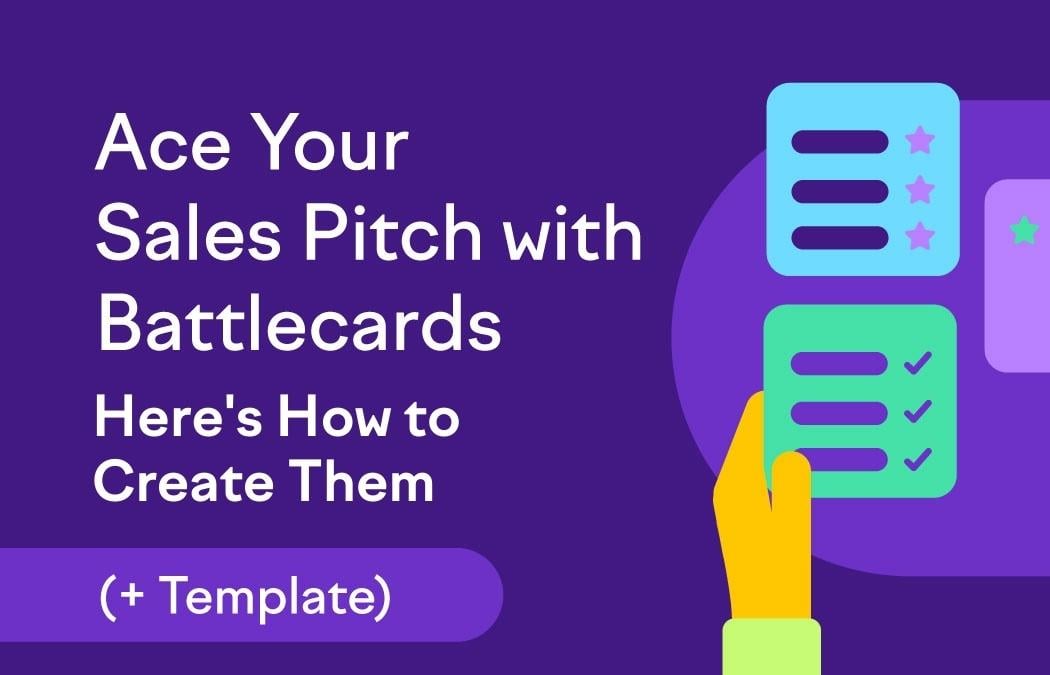Ever hear your sales team fumble through pitches or provide the wrong product information? It’s painful. Like salt on an open wound kind of pain.
As a sales leader or product marketing manager, this can leave you frustrated, overwhelmed, and defeated.
But it doesn’t have to be that way. It is possible to get and keep your sales team all on the same page, using the right information every time.
With sales Battlecards as your playbook, you can get your sales team ducks in a row and start outselling your competition.
You might be wondering though, if they’re so powerful, why doesn’t everyone use sales Battlecards? Just as so many things that are good for us we know we SHOULD do (ahem, exercise!), it’s easier said than done.
Starting a Battlecard program can seem daunting, but it is doable. Below we cover everything you need to know about creating a sales Battlecard, from what to include, to how to find the information, to how to use it. We also include a sales Battlecard template.

We’re trying something new here by including prompts you can use to ask ChatGPT, Bard, or other NLP AI programs to help you populate your Battlecards. While it’s a great way to get started, please note that information may be out of date or otherwise incorrect, so double check important insights. And if you don’t get a helpful answer the first time, ask again!

Let’s create your first Battlecard. Start with your biggest competitor.
Company Overview
This section serves as a simple “cheat” sheet for learning company basics and is especially useful if you have new reps, a large number of competitors, or a new competitor in your space.
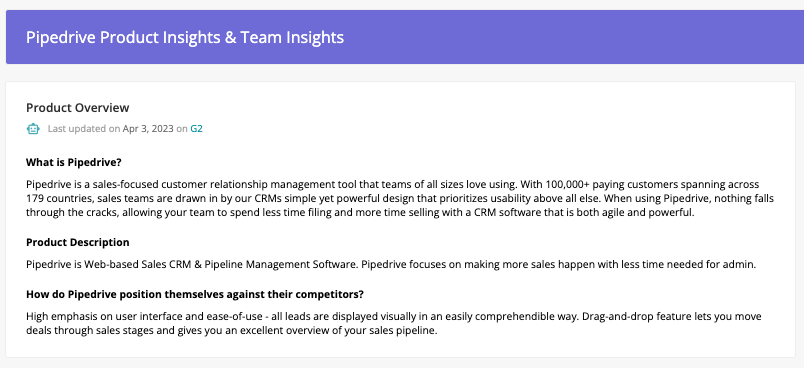
Include in this section:
- Company name and logo
- Location
- Date founded
- Number of employees
- Funding
- Regions served
- Brief description of their product or service
- Key customers
How to find company overview:
- The company website and LinkedIn profile can provide most of the information. Crunchbase will often reveal revenue, employee count, and investment information.
- Ask ChatGPT or other NLP AI (natural language processing AI), try this prompt*:
- Can you give me a brief company overview for (competitor)? I'd like to see:
- Location
- Date founded
- Number of employees
- Funding
- Regions served
- Brief description of their product or service
- Key customers
How Kompyte can help:
- Kompyte can find and automatically update this information for you from sources such as LinkedIn and Crunchbase.
How to use company overview:
- A must-have for call prep
- A reference while in calls
Company GTM Strategy
This gives an overview of where this competitor fits in the overall competitive ecosystem and insight into how they market themselves.
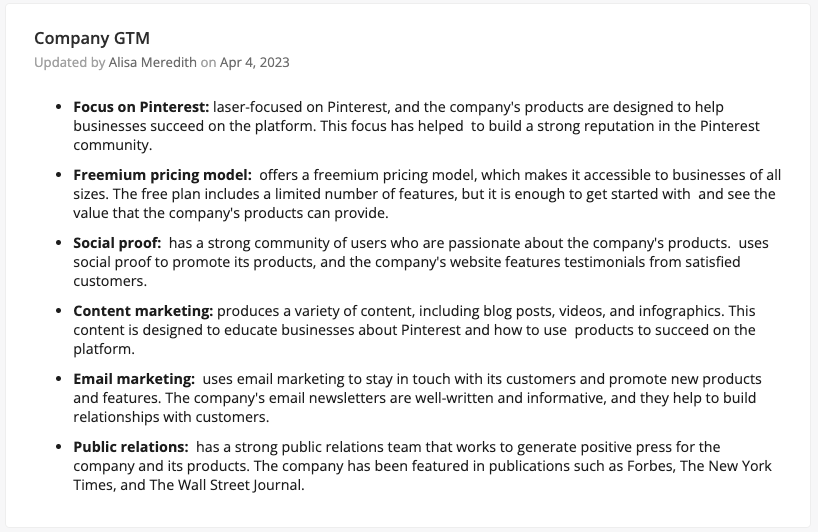
Include in this section:
- Who they serve, including industries/verticals (include known customer names)
- Partners (marketing, technology, or otherwise)
- Go-to-market strategy (ie., do they tend to offer first-year discounts, with rapidly-increasing pricing?)
How to find company GTM strategy:
- Their website, and LinkedIn profiles - look for content such as blog posts and ebooks as well as customer testimonials to learn more about the customers they serve, the partners they work with, and the industries they specialize in.
- Ask ChatGPT or other NLP AI (natural language processing AI), try this prompt (Bard gave us the better answer here)*:
- Can you give me a brief overview of (competitor) go to market strategy?
How Kompyte can help:
- Automates collection of new case studies and partnerships
- Keep this information updated and accessible for sale team prep and call reference
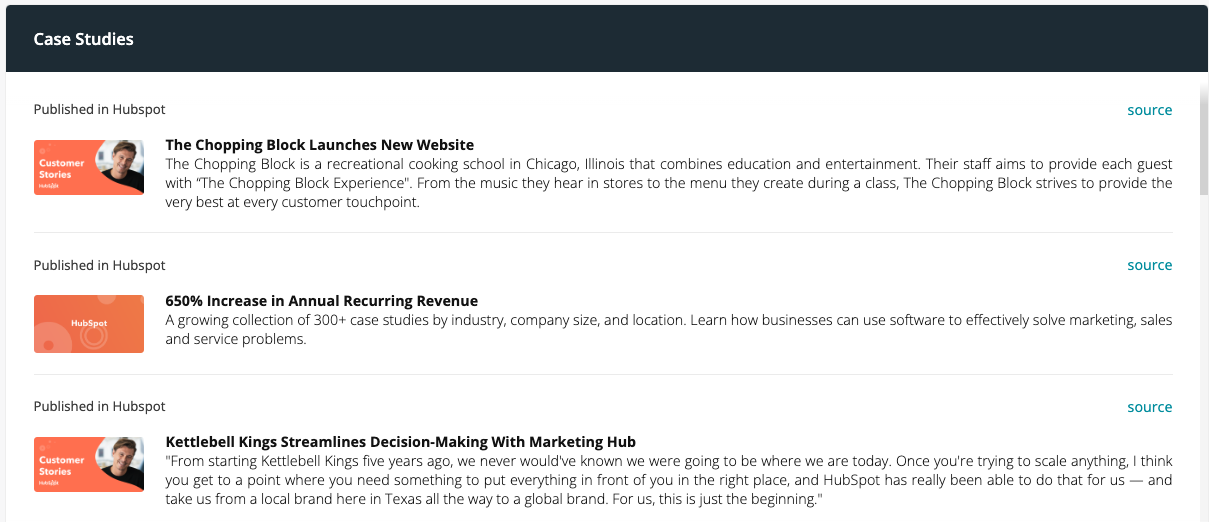
How to use company GTM strategy:
- A must-have for call prep
- A reference while in calls
Product Overview
Here, we are creating a quick reference to show what your competitor offers and how they position each product or service.
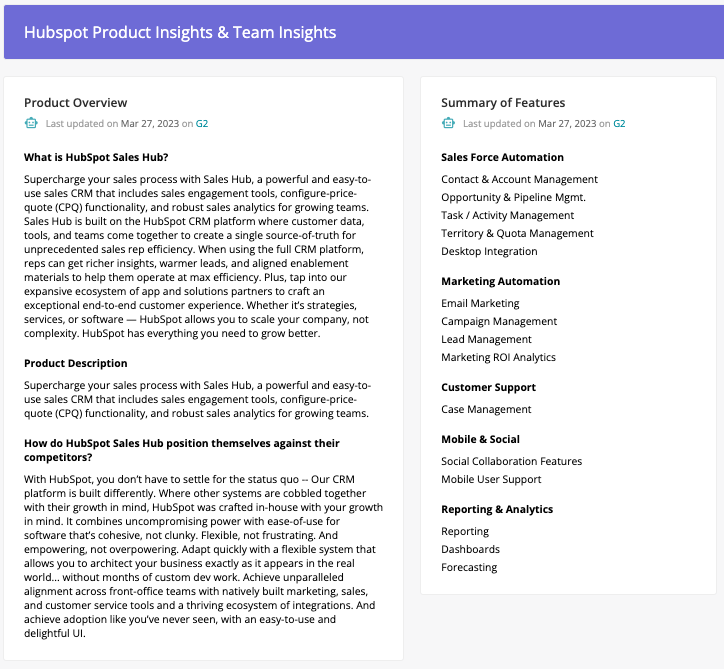
Include in this section:
- A list of features
- Integrations
- Strengths
- Weaknesses
How to find product overview information:
- Competitor website, reviews, YouTube videos (from the competitor and from users)
- Team-sourced intel - what is your team learning on prospect calls, from user research, or otherwise?
- Ask ChatGPT or other NLP AI (natural language processing AI), try this prompt*:
- What should a sales rep working at (your company) know about (competitor) product features and functionality to win more deals?
How Kompyte can help:
- Spot updates to key pages announcing new features, as well as press releases, Google alerts, RSS feeds, and social updates mentioning new features.
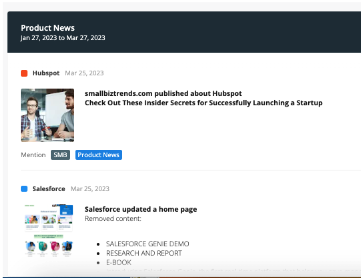
How to use product overview information:
- Use in call prep on competitive deals. As you start to figure out what the prospect wants, you can emphasize your product offerings and strengths, particularly where they overlap with competitor weaknesses.
- When you’re on a call, this section of a Battlecard can be referenced in answering feature-specific questions.
Feature Comparison
In a Battlecard or report, the feature comparison is a simple table showing the product features offered by each company.
Include in this section:
- Every feature offered by your company and the competitor
- Indicate whether the feature is offered fully, partially, or not at all. Add clarifying notes as needed.

How to find feature comparison information:
- Competitor website, reviews, YouTube videos (from the competitor and from users)
- Team-sourced intel - what is your team learning on prospect calls, from user research, or otherwise?
- Ask ChatGPT or other NLP AI (natural language processing AI), try this prompt*:
- Can you give me a product comparison chart for (competitor) vs. (my brand)?
How Kompyte can help:
- Spot updates to key pages announcing new features, as well as press releases and social updates sharing new features.
How to use feature comparison information:
- Use during calls to answer questions about how product features compare and whether or not you or the competitor includes a particular feature.
Pricing
Use pricing comparisons to help reinforce the value you offer, particularly when a prospect brings up a competitor plan that might be less expensive than the one they’re considering for your product.
Include in this section:
- Pricing - annual and monthly, if applicable
- Product tiers and the features included in each
- Discounts
- Hidden fees
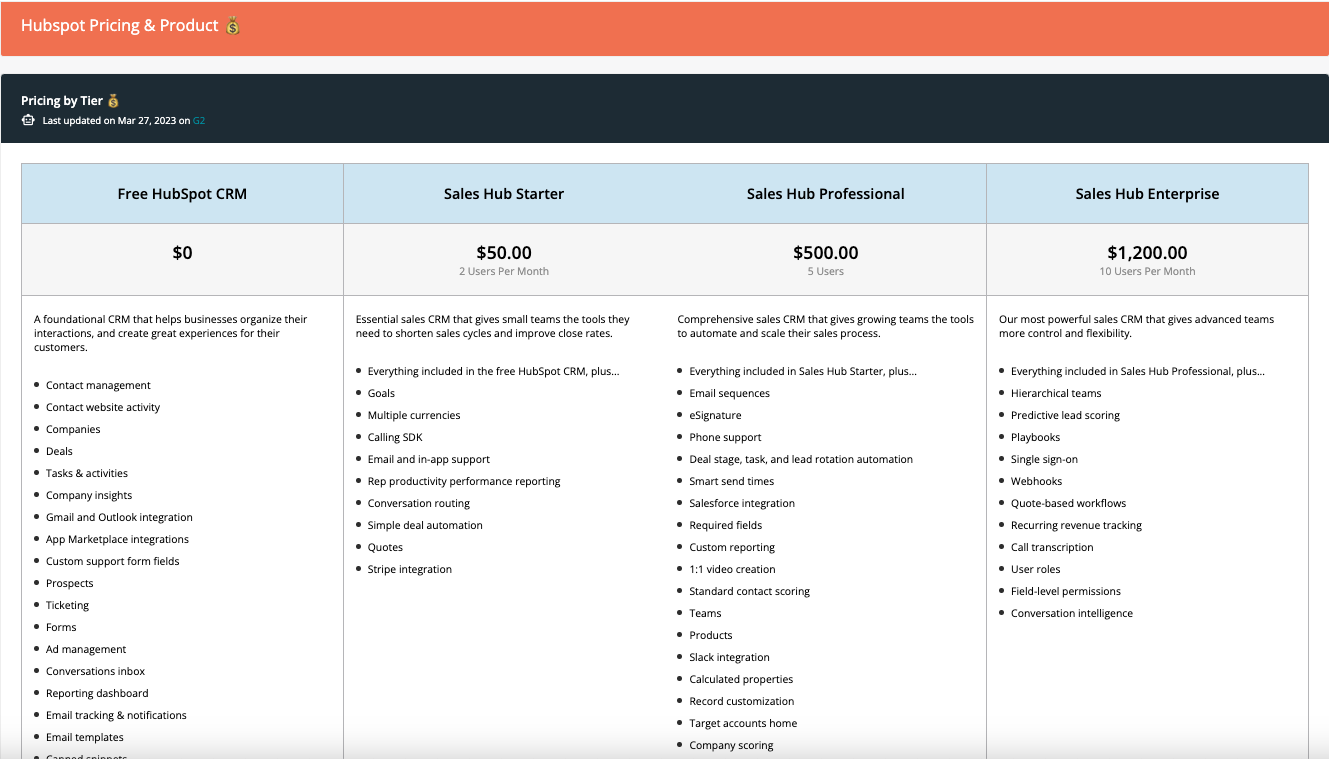
How to find pricing:
- Competitor website, reviews (G2 is great for SAAS companies), and user-generated content
- Ask ChatGPT or other NLP AI (natural language processing AI), try this prompt*:
- What should a sales rep working at (your company) know about (competitor) pricing to win more deals?
How Kompyte can help:
- Spot updates to pricing pages or social media updates sharing discount/sale pricing
- Detect and flag customer reviews that mention pricing
How to use pricing information:
- Use in call prep on competitive deals.
- When you’re on a call, this section of a Battlecard makes a quick reference to combat pricing objections
Positioning
Knowing how your competitors talk about the value they provide helps you more effectively highlight the values of your own product to your advantage. Knowing how your competitors position YOU can help you overcome objections before they arise.
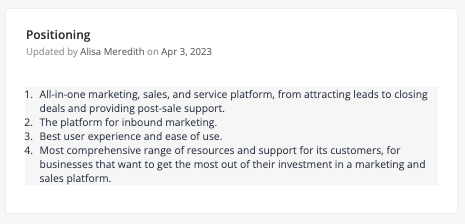
Include in this section:
- Messaging the competitor uses to position their product (ie., “we are the best social media solution for restaurants”)
- Messaging the competitor uses to describe your product (ie., “they’re best for very small businesses who don’t need detailed analytics”)
How to find messaging information:
- Competitor websites and videos
- Ask ChatGPT or other NLP AI (natural language processing AI), try this prompt*:
- Can you tell me briefly how (competitor) positions itself in the market?
How Kompyte can help:
- Automatically track messaging changes and A/B tests on key pages
How to use positioning information:
- Use in call prep on competitive deals. Knowing how competitors talk about their own products help you differentiate your own.
Reasons you Win / Competitor Weaknesses
Knowing why you win/why the competition loses to you is key to positioning your company as the best choice.

Include in this section:
- Areas of competitor weakness in features, customer service, or pricing
How to find reasons you win & competitor weaknesses:
- Competitor reviews are often the easiest means of uncovering what people don’t like about the product or service.
- Ask ChatGPT or other NLP AI (natural language processing AI), try this prompt*:
- As part of a sales Battlecard, what are 5 main weaknesses that (competitor) has vs (your brand)? (note, sometimes it will answer this question, sometimes it won’t)
How Kompyte can help:
- Automatically find and surface customer reviews, adding them to Battlecards and reports as needed. Results can be filtered to show only reviews with low ratings.
How to use reasons you win & competitor weaknesses:
- Highlight why you win (“other companies have chosen us for…”), including your unique offerings to demonstrate why your product is the best option for them.
Reasons You Lose / Competitor Strengths
What are the reasons a prospect might choose your competitor over you?

Include in this section:
- Areas of competitor strength in features, customer service, or pricing
How to find reasons you lose / competitor strengths:
- Compare your company’s critical reviews with your competitors’ favorable reviews.
- Ask ChatGPT or other NLP AI (natural language processing AI), try this prompt*:
- As part of a sales Battlecard, what are 5 main strengths that (competitor) has vs (your brand)? (note, sometimes it answers, sometimes it won’t)
How Kompyte can help:
- Automatically find and surface customer reviews, adding them to Battlecards and reports as needed. Results can be filtered to show only reviews with low or high ratings.
How to use reasons you lose / competitor strengths:
- Being aware of your product’s weaknesses can help you avoid areas where you don’t compare favorably with your competitors, or you can proactively point out areas where you are working to improve functionality. The prospect may already be aware of these and appreciate your transparency.
Overcoming Objections
These are the talking points that can stop a demo in its tracks. Being prepared and equipped to overcome objections is key to increasing win rates.
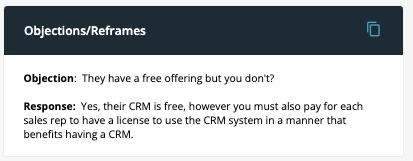
Include in this section:
- Objections that commonly arise during sales calls
- Ways to respond to or reframe objections
How to find and combat common objections:
- This will largely come from your sales reps’ personal experience. Ask them which objections they hear repeatedly and how they have best overcome them.
- Ask ChatGPT or other NLP AI (natural language processing AI), try this prompt*:
- Write 5 main objections a sales rep working at (your company) will have to face when discussing with potential customers who are considering (competitor). Write the responses so they are short, concise, and sound natural
How Kompyte can help:
- Your Battlecard stores not only automatically-generated insights, but also gets information out of your teams’ brains and into a platform where everyone can benefit.
How to use common objections:
- On sales calls when these come up. Never be caught off guard again!
Customer Reviews
While you’ll use reviews to fill in other areas of your Battlecards already discussed, keeping up with new competitor customer reviews is crucial to spotting trends, weaknesses, and potential threats.
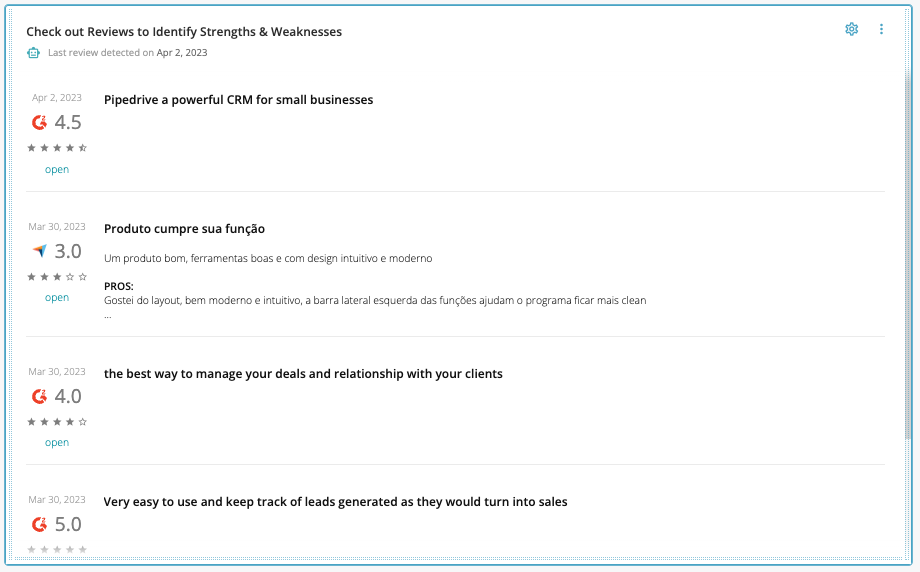
Include in this section:
- Customer reviews from online review platforms and perhaps a summary of most and least-liked features.
How to find customer reviews:
- Check the review platforms relevant to your industry
- Ask ChatGPT or other NLP AI (natural language processing AI), try this prompt* (and for this one, we liked Bard’s response better):
- What are some of (competitor’s) customer reviews? Overall what do their customers like and dislike about the product?
How Kompyte can help:
- Battlecards are automatically updated with new customer reviews. Show them all or just look at high or low-rating reviews.
How to use customer reviews:
- Great for call prep and refreshing the strengths and weaknesses sections of the Battlecard
Win/loss Ratio
Knowing how you fare when competing against an individual competitor is key to improving your sales process.
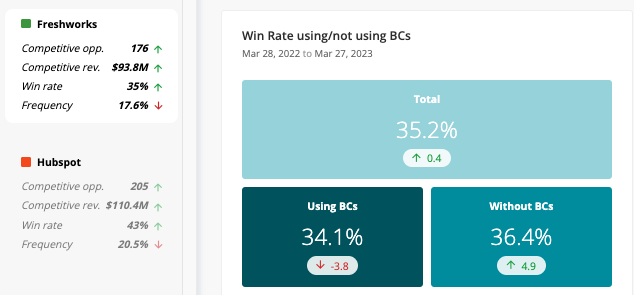
Include in this section:
- How often you win against this competitor
How to find your win/loss ratio:
How Kompyte can help:
- Two-way integrations with HubSpot and Salesforce can make these calculations for you - and even show you the impact of using Battlecards on your win rates.
- Import data from your favorite CRM and Kompyte will figure it out for you.
How to use win/loss ratio:
- Spotting trends and room for improvement
- Spotting and celebrating the results of improvement in your messaging and sales processes
Landmines
“Landmines” are innocuous-sounding questions that allow you to indirectly bring up competitor weaknesses (not mentioning them by name) while highlighting your strengths.

Include in this section:
- Questions that help you get to know your prospect and set you up to share your differentiators in a conversational manner.
- Talk tracks to highlight your strengths based on each question.
How to find competitor landmines:
- Use the strengths and your competitor’s weakness information you’ve already collected
- Ask ChatGPT or other NLP AI (natural language processing AI), try this prompt*:
- Write 3 landmines a sales rep working at (my company) can use during a demo to increase the chances of winning a deal vs. (competitor). Be subtle but aggressive against Hubspot, and don’t mention (competitor).
How Kompyte can help:
- Make these talking points easy to access in scannable, shareable, always-up-to-date Battlecards that the whole team can access
How to use competitor landmines:
- Ask these basic questions during a sales call to better understand your prospect and open up the conversation to positioning yourself as a better choice than the competition.
Win Stories
This is where you share the story of deals recently won vs. this competitor. This is vital if you have a large sales team or one that doesn’t have other forums for sharing this information.
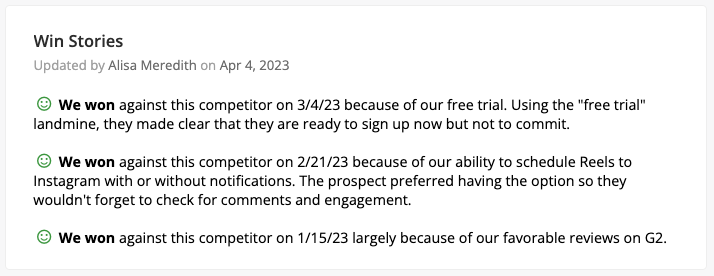
Include in this section:
- Why you won, objections overcome, etc.
- Phrases the prospect used when talking about why they chose you
How to find win stories:
- Sales reps are your best source for this information, though it will be captured in your call-recording software as well.
How Kompyte can help:
- Make these talking points easy to access in scannable, shareable, always-up-to-date Battlecards that the whole team can access
How to use win stories:
- Use for call prep. Knowing what worked for one sales rep can help improve the process and messaging of the entire team.
- Use in training and onboarding to make sure the whole team knows what is working against this competitor.
Loss Stories
This is where you share the story of deals recently lost vs. this competitor. This is vital if you have a large sales team or one that doesn’t have other forums for sharing this information.

Include in this section:
- Why you lost - objections, questions you couldn’t answer, positioning that didn’t resonate
- Phrases the prospect used when talking about why they did not choose you
- What you think might have made a win possible
How to find loss stories:
- Sales reps are your best source for this information, though it will be captured in your call-recording software as well.
How Kompyte can help:
- Guarantee these critical talking points are just one click away in a sales Battlecard, always up-to-date, digestible, shareable and measurable
How to use loss stories:
- Use for call prep. Knowing what worked for one sales rep can help improve the process and messaging of the entire team.
- Use in training and onboarding to make sure the whole team knows what is working against this competitor.
Close More Deals with Sales Battlecards
Creating Battlecards is an effective way to ensure your sales team stays organized, on message, and prepared for any potential customer objection.
With our free Battlecard template and by following the steps we outlined, you can create Battlecards and equip your sales team with the knowledge they need to close deals with confidence.
Remember to update your Battlecards regularly to ensure they stay current and relevant. With a little effort and attention to detail, you can transform your sales pitch and take your business to the next level.

*ChatGPT information is only updated to 2021 and may be otherwise inaccurate. Other NLP AI has similar limitations. Always double check vital information.
